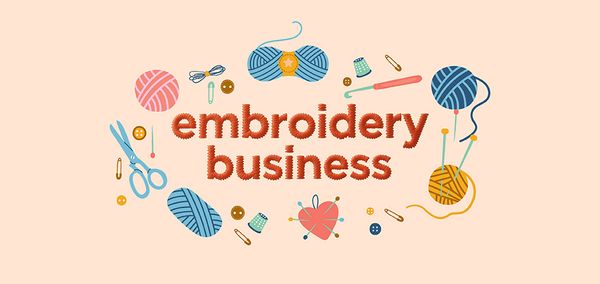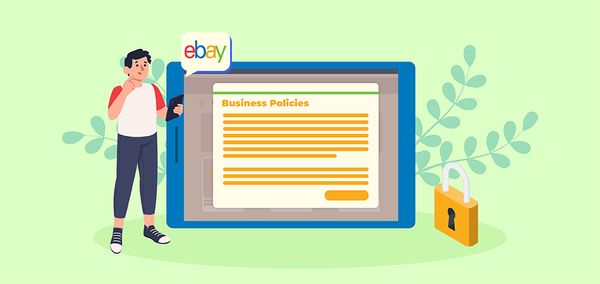Creative Exit Popups Tips to Get Exit Intent Right

You likely prioritize attracting quality traffic to your website as a marketer, regardless of whether you're in e-commerce, B2B, or SaaS. Gaining new visitors is time-consuming and costly, which is why you must make the most of your hard-earned traffic.
Moreover, in this day and age of soaring customer acquisition costs, you can't afford to lose a great prospect after landing on your website. Popups based on exit-intent are exactly what you need.
You can target visitors who are about to leave your site with elegant and easy-to-understand exit-intent popups and show the right message that will motivate them to stay and take action.
What Is Exit-Intent Pop-Up
By tracking the motion of the user's mouse, you can trigger an exit-intent pop-up. The message appears at a critical point where your user decides not to take an intended action and quits the page.
When a customer comes across a pop-up with an attractive visual offering a discount or a gift, they are more likely to stay on the page.
Providing a downloadable asset can at least entice users into giving you their details. Thus, your marketing team is able to retarget the users via other channels based on the data.
Furthermore, exit-intent pop-ups make your users feel heard and that someone cares about their needs.
It is an enriching experience for them, which kickstarts a positive relationship with your brand. Especially when it comes to online shopping, making the customer journey interactive through exit pop-ups is beneficial for both shoppers and businesses.
These pop-ups created with tools like the Claspo pop-up builder can be used for targeted marketing to achieve your goals, including getting people to subscribe to your newsletters and emails or buy a product that they added to their wish list.
How Exit Intent Pop-Ups Work
Take a look at your e-commerce site. Imagine a visitor browsing your product line. In this case, they move their cursor outside the frame/boundaries of your website to exit the web page they're on.
There is a pop-up window that offers a deal so they stay on the site to read it. Clicking your CTA causes them to convert as you intended.
Using exit-intent pop-ups, you can retain visitors on your site for longer periods, increase conversions, decrease cart abandonment rates, and increase your email list, among other benefits.
Your website can benefit from exit-intent popups in so many ways. The following are some of the ways they can help you:
- Increase your email list: Increase your subscribers quickly.
- Send out lead magnets: With coupons, freebies, and valuable content, you can entice new visitors.
- Reduce abandonment rates: Engage your visitors before they leave forever.
- Avoid cart abandonment: Promote purchases at key points in the customer journey.
- Improve SEO: Boost your SEO by increasing the time people spend on your site, redirecting users to popular posts, and more.
How Exit-Intent pop-up Boosts Conversion Rate
Prospects do not become customers unless you establish an initial connection with them. Neither will sales occur if prospective customers aren't convinced of or interested in the products/items/assets you offer.
Is this making you wonder if pop-ups will lead to more conversions? Of course, they will. The users are starting to engage with your brand even if they are just signing up for a mail subscription through the exit-intent pop-up.
As they get to know you over time, they eventually become your clients and later on, your brand evangelists.
Exit-intent pop-ups are considered a conversion optimization strategy magic wand that can help you turn the tables for successful marketing.
Your web pages should speak the language and convey the messages that your target audience wants. When it's designed from a customer's perspective, an exit-intent pop-up does this job perfectly.
E-commerce websites are turning to exit-intent pop-ups to market to their audiences as online shopping spikes in 2022.
It keeps users anchored in the store because it keeps them engaged. An e-store's conversion rate increases as more visitors spend time there.
Tips to Get Exit Intent Right
For e-commerce and business websites, understanding conversion rates and exit-intent pop-ups make sense.
Users can interact with your message differently if your pop-up design, color scheme, and tool are optimal. Pop-up designs that don't adhere to the best practices can cost you a lot of money. Some tips include:
1. Personalize your pop-ups
Avoid generic pop-ups. Our list of exit popup hacks starts with personalization because it makes all the difference.
Let's say you move to a new neighborhood. A half-hour conversation about breakfast burritos ensues when you head down to the corner store.
| Get Started Now to Grow Your Online Business with the Best AliExpress Dropshipping Tool - DSers! |
One of the street vendors is shouting at you when you're walking by a few days later, encouraging you to purchase an apple from their cart. After that, you hear your name; it's an old friend, smiling at you and inviting you into his shop.
Would you rather buy an apple from an anonymous vendor or a shop owner who knows your name and smiles at you? If we were you, we'd go with the shop owner.
2. Provide an opt-out option
Pop-ups with exit-intent typically consist of a simple opt-in form and a CTA button. By adding an opt-out option, you can increase conversions by 30-40%, despite what might seem counterintuitive.
What's the reason? Visitors feel like they have a choice when saying yes is not the only option, which makes them more inclined to engage with your offer.
3. Don't show the "X" button too soon
Web users have become so accustomed to exit-intent pop-ups that closing them is almost a reflex for seasoned online shoppers. In this case, most visitors will close your popup before reading its content.
If you delay the appearance of the closing "X" for a few seconds, you can mitigate this problem. Your exit pop-up's value proposition will be presented to them as they look for the exit button.
You don't need a lot of extra time to get a website visitor to engage with an offer if you're offering something truly compelling, like a significant discount code or a free sample box.
4. Create different messages for different segments of visitors
The visitors to your website need to be segmented so that you can deliver messages tailored to their needs.
There is no single message that will be relevant to all the shoppers on your website, so it's necessary to make sure that all the messages you send are relevant to your visitors.
Here are some suggestions:
- Personalized for new visitors and regular visitors
- Visitor at the beginning of the customer journey vs visitor further along in the process
- Email subscribers vs. non-subscribers
Make sure you don't bombard returning visitors with the same message over and over again. You can then provide messages at various stages of the buying process for better results.
5. Provide links to related articles
If you're an online store or a publisher, your website functions as your online storefront and the longer someone stays there, the better. So sometimes you want to lower your bounce rate and encourage visitors to spend longer on your website.
Using an exit-intent popup to suggest related blog posts to the one they just read is a great way to accomplish this.
It's important to realize that there are many reasons why someone might be about to leave your site, and not all of them have anything to do with your content. It could have been a distraction, like an email or social media notification.
6. Offer visitors some options
Unfortunately, so many exit popups don't offer visitors what they want. This occurs because many businesses have multiple buyer personas, and each persona will respond differently to offers.
The popup may offer the best manual ever written on how to juggle 6 balls in the air, but if you have a segment of visitors who have mastered that technique, and who now wish to learn how to spin a ball on their nose as well, then your offer is useless to capture their attention.
By letting the visitor choose what they're most interested in, you can easily get around this problem and present the perfect offer to them.
7. Run A/B tests on your messages
Rather than being unknown, the tip is simply underutilized. Conversion optimization requires A/B testing. It's impossible to predict which headline versions will convert and which will fail.
You can effortlessly test alternative headlines and call-to-action messages on your exit-intent popups to see which messages are most effective using the built-in A/B testing feature. This is the best way to increase the conversion rate of an exit popup.
8. Contextualize it
While someone is looking for running shoes, it's harder to sell them rubber slippers. Likewise, pop-ups are harder to sell. Displaying an exit-intent popup with no information about a user's session is the worst thing you can do.
You can make a difference, however, by putting your exit pop-ups into the context of your browsing session. Your chances for success will be significantly increased if you can target the right user with the right message.
It would be incongruous to show a popup promoting an e-book about Facebook ads to a user who spends a couple of minutes reading a post about conversion rate optimization. It is much more effective to provide content that is relevant to the audience's interests.
9. Don't be intrusive
There's nothing more frustrating than having to keep saying no over and over again. If users close the window but do not leave the website after making an exit intent, you shouldn't show them the same window 2 minutes later. Respect their choice.
Therefore, the frequency at which your exit pop-ups appear must be optimized. If a user clicks the close button, they won't see the exit intent pop-up again for at least a day.
You should refrain from displaying the same pop-up to visitors for up to one month if they click the negative CTA. Visitors who have already registered should not see pop-ups.
10. Take advantage of social proof
People may not be able to make a purchase decision based on a simple call to action. You should include supporting evidence with your CTA to make the most of your pop-ups. Let them know they are not alone with their problems.
For instance, your pop-up can showcase some of the companies you've worked with or simply display your satisfied customers as proof that you can be trusted. It is also a powerful argument to mention that you already have several thousand subscribers.
Other Ideas for Exit Intent Pop-Ups
There are other types of exit intent pop-ups you can implement in addition to these five. Here are a few more ideas you could offer your target audience - whether it generates leads or not.
- Ship for free
- Contest entry
- Subscription to the blog
- Survey of customer experience
- Lesson or course
- Customized to past purchases
- Demo of products
Conclusion
Pop-ups win hands down when comparing the amount of effort associated with implementing exit pop-ups and, say, producing high-quality marketing content.
A pop-up can be implemented on your website within a couple of hours or even minutes with dozens of different plugins and add-ons. You can also optimize their performance and experiment with different copy, design, or placement options.
Pop-up exit intent marketing is an effective strategy for generating leads. You will be able to retain more audience members on your website, increase conversions, and increase revenue.













 Company
Company
 Why Choose DSers
Why Choose DSers
 Blog
Blog
 Help Center
Help Center




 Live Chat
Live Chat